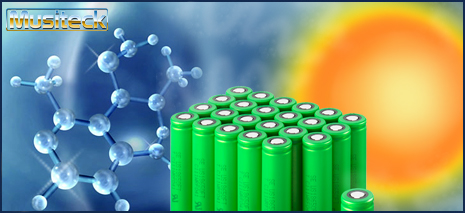Researchers from MIT University have discovered exactly how a substance known as dithernium fluvalen, which was prepared in 1996, is able to store heat and release it at our request

Researchers from MIT University have discovered exactly how a material known as dithernium fluvalen, which was prepared in 1996, is able to store heat and release it at our request. This new knowledge will enable the discovery of similar compounds based on common and cheaper materials than ruthenium, which could in the future be used in the development of rechargeable batteries that store heat instead of electricity.
The separate undergoes a structural change of shape after absorbing the sunlight, and subsequently rises to a higher energy state, where it remains stable indefinitely. When the isolated in the excited state is reacted with a small amount of catalyst or heat, it returns to its original state while releasing heat.
However, the research team discovered that the mechanism is a bit more complex than that. "It turns out that there is an intermediate step that plays a crucial role in this mechanism," said Jeffrey Grossman, professor of engineering in the Department of Materials Science and Engineering at MIT. In this intermediate stage the separation forms a semi-stable intermediate configuration that is between the two known states. "This finding was unexpected," said the researcher. The two-step process helps explain why the alloy is so stable, why the process is easily reversible, and why replacing the metal ruthenium with other elements did not lead to the desired results. In fact, explains the lead researcher, this process can enable the preparation of a "rechargeable heat battery" capable of storing and releasing heat originating from sunlight or other heat reservoirs.
Basically, the researcher points out, a fuel composed of the special compound - fulvalene diruthenium - "is able to release heat by two hundred degrees Celsius, an amount that would be enough to heat our houses, or even run an engine that produces electricity."
Compared to other solar energy approaches, the researcher notes, "Our method utilizes many advantages of solar heat energy, but stores the heat in the form of fuel available for use. The method is completely reversible and the resulting fuel is stable for a longer period of time. It can be used wherever we want, as needed.
You can expose the fuel to the sun, charge it with heat, then use that heat, and expose the material again to the sun to recharge it with heat.” The disadvantage of using the rare and expensive metal ruthenium still remains the bottleneck in this method, the researcher points out, but now that the basic mechanism of the isolated activity has been properly understood, it will be easier to find other materials with the same ability. This isolate, "is the wrong material, but it proves that the method is possible," adds the researcher.
In the next step, the researcher explains, the team of scientists will try to use a combination of computer simulations, chemical experience and databases of tens of millions of known substances to find other candidates with a similar structure but improved capacity, or greater availability or lower cost. "I fully believe that as we understood how this substance works, we will be able to find other substances that work in a similar way", the chief researcher is convinced.

2 תגובות
fascinating as always,
Thanks
Hope it will be successful. In the meantime, a lot of talk - like sand, and the poor of the world have nothing to eat. We need to find a more successful energy model for humans